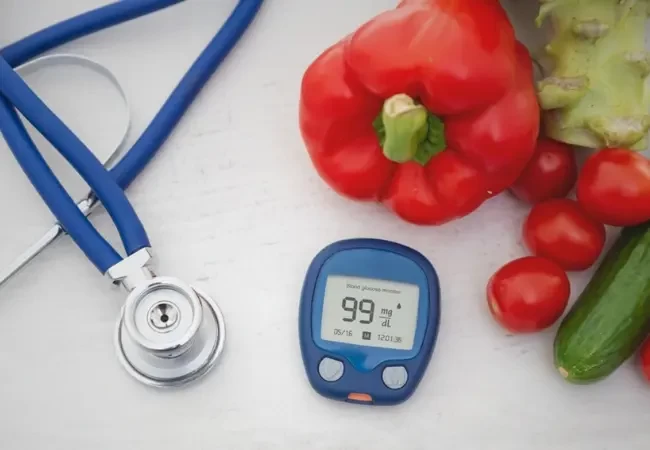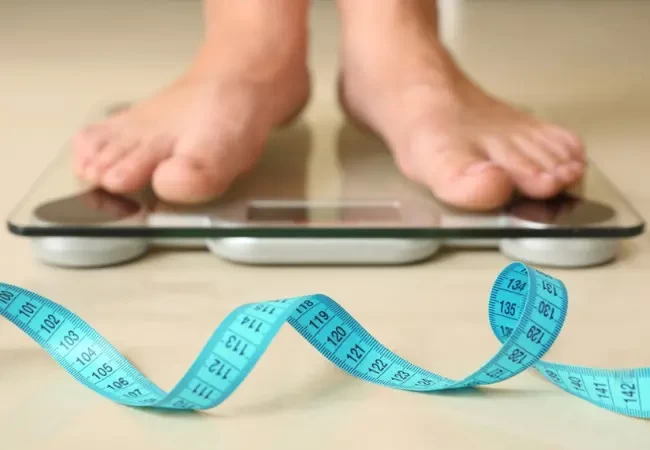Blog
Diabetes
in
Children

Diabetes in Children - Symptoms and Causes
 Medically reviewed by: Dr. S M Karthik, Consultant Adult and Pediatric Endocrinologist - Written by Jasni Salim - Updated on 25/04/2024
Medically reviewed by: Dr. S M Karthik, Consultant Adult and Pediatric Endocrinologist - Written by Jasni Salim - Updated on 25/04/2024Diabetes in children will come with different challenges. But if it is found early, kids and teens can learn to take care of it and stay healthy. Early signs in children can be drinking and peeing a lot more than usual. The National Diabetes Statistics Report 2020 says about 210,000 kids and teens in the US have diabetes. Type 1 diabetes is more common in young people than type 2, but both are increasing. In 2014–2015, doctors found type 1 diabetes in about 18,291 kids aged 10 to 19 and type 2 in about 5,758 kids. Each year, type 1 diabetes rates go up by 1.8%, and type 2 rates by 4.8%. Kids with diabetes have a higher risk of health problems later in life. In this article, we will talk about diabetes in children and teens, including symptoms, causes, and treatments.
Different Types of Diabetes that Affect Young People
Type 1 and type 2 diabetes are two different conditions that affect how the body uses insulin. Type 1 diabetes is usually found in younger people, but both types can affect children and teenagers.
Type 1 Diabetes
Type 1 diabetes in children which is once called juvenile diabetes takes place when the pancreas cannot make insulin. Insulin is needed for sugar to move from the blood into cells. Without it, blood sugar levels can get too high.
People can get type 1 diabetes at any age right from early childhood to adulthood, but it is usually found around age 13. About 85% of type 1 diabetes cases are diagnosed in people under 20 years old. Treatment for Type 1 diabetes in children includes using insulin for life, checking blood sugar levels, and managing diet and exercise to keep sugar levels in the right range.
Type 2 Diabetes
Type 2 diabetes in children is less common, but it can occur when insulin is not working correctly. Without enough insulin, glucose can accumulate in the bloodstream. The chance of developing type 2 diabetes increases as people get older, but children can also develop it. The number of type 2 diabetes in children is going up, especially as more children are becoming obese.
In 2015-2016, about 18.5% of kids and teens aged 2-19 in the U.S. were obese. Many kids with type 2 diabetes, over 75%, have a family member who also has it. This can be because of shared habits or because it runs in the family. If a parent or sibling has type 2 diabetes, there is a higher chance that a child might get it too.
Sometimes, people with type 2 diabetes need to take medicine. But many times, they can control it by:
- doing more exercise
- diet changes
- maintaining a normal weight
What are the Symptoms of Diabetes in Children?
The signs of diabetes are similar in kids, teens, and adults. Both types of diabetes have common symptoms, but there are differences that can help tell them apart.
In children, symptoms of type 1 diabetes often appear quickly over a few weeks. On the other hand, type 2 diabetes symptoms develop more slowly. It might take months or even years before someone is diagnosed.
Type 1 Diabetes
Have a look at the main symptoms of type 1 diabetes in children and adolescents right below.
- hunger
- increased urination and thirst
- fatigue
- weight loss
- a fruity smell on the breath
- irritability
- blurred vision
Before being diagnosed, many kids lose weight. Girls might get yeast infections, which can also be a sign of diabetes. Some people might have a condition called diabetic ketoacidosis (DKA) when they are diagnosed. This happens when the body starts burning fat for energy because there is not enough insulin. DKA is a serious condition and needs treatment.
However if people recognize the four main symptoms of type 1 diabetes early, they might be diagnosed before DKA happens. They are:
- Bathroom trips: The child might be going to the bathroom a lot, and babies may have heavier diapers. Older kids might start wetting the bed after staying dry for a while.
- Thirsty: The child may be drinking a lot but still feeling very thirsty.
- Tiredness: The child might be more tired than usual.
- Losing weight: The child may be getting thinner and losing weight.
Type 2 Diabetes
Take a look at the main symptoms of type 2 diabetes below.
- increased thirst
- urinating more often, especially at night time
- unexplained weight loss
- tiredness
- slow healing of wounds or cuts
- itching around the genitals due to yeast infection
- blurred vision due to eye dryness
Another sign of insulin resistance is when dark, velvety patches of skin appear which is known as acanthosis nigricans. Polycystic ovary syndrome (PCOS) is another condition often linked with insulin resistance, although it is not a direct sign of it. Parents and caregivers should see a doctor if they notice any of these symptoms in their child.
How to Prevent Diabetes?
At present, it is not possible to stop type 1 diabetes from occurring, but you can mostly prevent type 2 diabetes. Here are some things that can help stop type 2 diabetes in children:
-
Keep a healthy weight: Being overweight raises the risk of getting type 2 diabetes because it makes insulin resistance more likely.
-
Stay active: Being physically active lowers insulin resistance and helps control blood pressure.
-
Limit sugary beverages and foods: Eating too many sugary foods can lead to weight gain and issues with insulin. A balanced diet with lots of vitamins, fiber, and lean proteins reduces the risk of type 2 diabetes.
Conclusion
More kids and teens are getting diabetes. Type 1 diabetes is more common in young people than type 2, but both types are going up. Most of the time, people can control the symptoms of both types of diabetes by eating healthy, exercising regularly, and taking medicine. When they manage their diabetes well, people with diabetes can live full and healthy lives. But sometimes, people might need to consult a doctor to control diabetes.
Silverline Hospital is the right choice to treat your diabetes. They make special plans for each person based on what they need. They have doctors, dietitians, and educators who know a lot about diabetes. They teach people how to manage their lifestyles and offer the best treatments for good results.

More Blogs
-

Struggling with Erection or Early Ejaculation? Here's How to Get Help
Struggling with erectile dysfunction or premature ejaculation? Learn common causes, treatments, and how to seek professional help with confidence.
-

When Should Diabetics Eat? Expert Tips on Meal Timing and Blood Sugar Control
Learn how diabetics can optimize meal timing to better control blood sugar. Expert tips for healthier, more balanced living.
-

Facing the Fear: Understanding Psychological Erectile Dysfunction Before Marriage
Discover the causes and solutions for psychological erectile dysfunction before marriage. Gain insight, support, and confidence for a healthy relationship.
-

Why Overweight Individuals Should Embrace Early Dinners
Ready to lose weight smarter? See why early dinners are a game-changer for overweight individuals aiming for lasting health and weight control.
-

Overweight? Start with This One Powerful Lifestyle Change
Struggling with weight? Most of us eat our heaviest meal of the day at night, usually after 9 or even 10 PM.


 Home
Home  Booking
Booking
 Chat Now
Chat Now  Call Us
Call Us